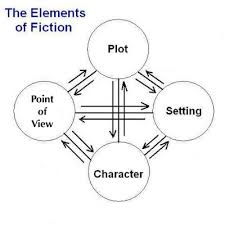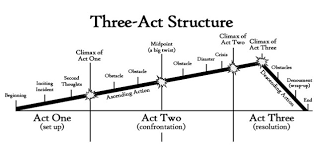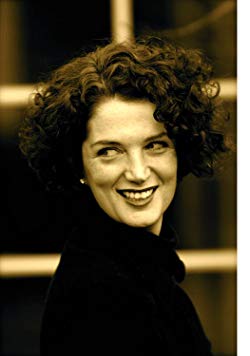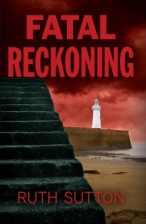When I’m talking about writing, explaining the balance between plot, character, point of view and setting is a helpful starting point for people who haven’t yet thought about how a novel is developed.  In my West Cumbrian trilogy, the first novels I wrote, setting was the central ingredient. From my research about this amazing place and its history, I began to think about a key character who could carry the story. Having found her, I then had her interact with various other characters. There was some consideration of the plot in the first one, but mostly that developed as I went along, with a fairly quiet conclusion that I felt was an authentic way for the story to end. I didn’t really think about ‘the arc of the narrative’, or how my protagonist might have a ‘journey’.
In my West Cumbrian trilogy, the first novels I wrote, setting was the central ingredient. From my research about this amazing place and its history, I began to think about a key character who could carry the story. Having found her, I then had her interact with various other characters. There was some consideration of the plot in the first one, but mostly that developed as I went along, with a fairly quiet conclusion that I felt was an authentic way for the story to end. I didn’t really think about ‘the arc of the narrative’, or how my protagonist might have a ‘journey’.
At some point in those early years of writing I went to a workshop run by Matthew Hall and William Ryan, who had both come to novel writing from careers as barristers. Part of that workshop, introduced briefly but not fully pursued because of shortage of time, was the idea of the ‘Three Act Structure’ commonly used in films. Hall had spent some time doing film scripts and this was the structure he brought to the novel. I’ve included here a relatively simple representation of this notion: check it on Google and you’ll find various more sophisticated models.
I was intrigued by the relative complexity of the ‘formula’ he presented to us, and read more about it after the workshop, but it always felt to me to be too ‘formulaic’, putting too much emphasis on plot structure, leaving character and setting as servants to the story. Or possibly I just didn’t have the patience to think the idea all the way through. My first interest was always in ‘where’ and ‘who’ rather than ‘how’.
When I moved into crime writing for the fourth book ‘Cruel Tide’, I revisited the thinking about the structure as ‘acts’ that build towards a climax, but still didn’t really reflect the formula in what I produced. Two more crime books followed, and the latest one, as yet untitled, is in production. Reflection on ‘structure’ as the first planning tool had faded almost completely over the intervening years. My books are well-received, within the limitations of that self-publishing brings with it. Many of my readers are Cumbrian, who are as interested as I am in the authenticity of the Cumbrian settings. Because I’m self-published I rarely get any professional reviews, or feedback from other professional writers. I rarely meet professional writers as I live in a remote place, a long way from the normal arteries of the publishing world.
Maybe that was why I suggested to the Kirkgate Arts centre in Cockermouth, an hour north of here in West Cumbria, that we should try to bring some Cumbrian writers together to talk about their work, and I would ‘host’ the event, interviewing the authors and sparking discussion among them. Long story short, the event happened last week was great success: three very different crime writers, all successful, with all sorts of exciting projects in the pipeline.
One of them was Paula Daly, from Windermere.  She writes what she calls ‘domestic noir’, and with such success that two of her novels have been adapted to a 6 part TV drama called ‘Deep Water’, which will air on TV here, starting in August. When the question came up of ‘where do a novelist’s characters come from?’, her answer was very interesting. She starts with structure – just as Matthew Hall had suggested in that workshop years ago. The ‘hero/protagonist’ is the centre of the action and the story tells her story, through various trials and tribulations to a final denouement. The characters all have a function, to support or to impede the hero’s progress, and their roles are planned early on. They are ciphers initially, created to serve the story. Only when the structure is clear are the characters then developed into three-dimensions, with their habits and mannerisms suggested by their preordained function.
She writes what she calls ‘domestic noir’, and with such success that two of her novels have been adapted to a 6 part TV drama called ‘Deep Water’, which will air on TV here, starting in August. When the question came up of ‘where do a novelist’s characters come from?’, her answer was very interesting. She starts with structure – just as Matthew Hall had suggested in that workshop years ago. The ‘hero/protagonist’ is the centre of the action and the story tells her story, through various trials and tribulations to a final denouement. The characters all have a function, to support or to impede the hero’s progress, and their roles are planned early on. They are ciphers initially, created to serve the story. Only when the structure is clear are the characters then developed into three-dimensions, with their habits and mannerisms suggested by their preordained function.
Paula was really clear about this, and I was fascinated by her certainty about the importance of this way of working. Her plotting and planning is done in great detail, she said, and the writing itself is the least enjoyable part of the whole process. It sounded as if the actual writing was almost a chore, an anti-climax after the excitement of developing the narrative. She sees the story in a series of filmic episodes, and it could be written as a screen play rather than continuous prose.
Could I do this. Do I want to? The upside is that stories written this way are almost tailor-made for adaptation into films or TV. The setting is almost immaterial: you use whatever setting is most accessible and attractive to the film-maker.
I’m still thinking, wondering whether this approach is possible for me. Do I have the patience do achieve it, or sufficient ambition to follow the rules? Maybe it’s the idea of ‘rules’ that I have trouble with. I have always been a contrarian and maybe too old, or stubborn, to change my ways.


 author of ‘The English Patient’, talking about his writing approach which involves twenty edits before he commits to print. The first draft is just a sketch, and it goes from there. What patience, I thought to myself. How does he slow down enough to let such snail’s pace iteration happen? Could I ever work like that?
author of ‘The English Patient’, talking about his writing approach which involves twenty edits before he commits to print. The first draft is just a sketch, and it goes from there. What patience, I thought to myself. How does he slow down enough to let such snail’s pace iteration happen? Could I ever work like that? Almost at the end of the writing and editing process on the new book now, and the last thing on the list of issues to deal with is the opening paragraph. The current version has been written and rewritten countless times over the past few months and before I’m done it’ll be started all over again. Not many lines, maybe half a dozen sentences, but I want to get it as good as I can.
Almost at the end of the writing and editing process on the new book now, and the last thing on the list of issues to deal with is the opening paragraph. The current version has been written and rewritten countless times over the past few months and before I’m done it’ll be started all over again. Not many lines, maybe half a dozen sentences, but I want to get it as good as I can. Readers love the Jessie Whelan trilogy for that reason. No one ever comments that the surprises of the plot kept them reading: it was all about what would happen to the people and the interest of the background.
Readers love the Jessie Whelan trilogy for that reason. No one ever comments that the surprises of the plot kept them reading: it was all about what would happen to the people and the interest of the background. ‘Cruel Tide’ and ‘Fatal Reckoning’ are mainly character driven, despite the skull-duggery of the plots. The tension is not so much ‘who dunnit?’, but ‘would the wrong doers be brought to justice?’ There was little in the way of police procedure as neither of the two main characters were senior police people, and the police were more concerned with covering things up than searching for evidence.
‘Cruel Tide’ and ‘Fatal Reckoning’ are mainly character driven, despite the skull-duggery of the plots. The tension is not so much ‘who dunnit?’, but ‘would the wrong doers be brought to justice?’ There was little in the way of police procedure as neither of the two main characters were senior police people, and the police were more concerned with covering things up than searching for evidence.
 The ‘Emperor’s clothes’ is the classic example: whereas adult viewers see the Emperor luxuriously clad as befits his/her status, the child sees that the Emperor is in fact naked. The child may say so, but will not be paid attention to because he/she is ‘just a child’.
The ‘Emperor’s clothes’ is the classic example: whereas adult viewers see the Emperor luxuriously clad as befits his/her status, the child sees that the Emperor is in fact naked. The child may say so, but will not be paid attention to because he/she is ‘just a child’. The other child in my latest story is younger, further back in my memory and beyond my teaching experience. This voice was harder to capture. One thing I was sure of however: this child is more ‘wise’ than those around him give him credit for. He may not say much but he misses very little of what’s going on, even though he may not understand all of it. He will offer what he knows only if asked directly, and demonstrate his knowledge in unconventional ways. Interesting. It creates tension that is subtle and quiet, but still intriguing to any reader whose senses have not been dulled by too much ‘action.’ I hope it works.
The other child in my latest story is younger, further back in my memory and beyond my teaching experience. This voice was harder to capture. One thing I was sure of however: this child is more ‘wise’ than those around him give him credit for. He may not say much but he misses very little of what’s going on, even though he may not understand all of it. He will offer what he knows only if asked directly, and demonstrate his knowledge in unconventional ways. Interesting. It creates tension that is subtle and quiet, but still intriguing to any reader whose senses have not been dulled by too much ‘action.’ I hope it works. From pantomime onwards, everyone enjoys booing the villain and seeing her/his downfall, and the same is true of some modern psychological thrillers so that the fear can be cranked up as the ‘goodie’ (or ‘less baddie’) is faced with an implacable foe. Sometimes it’s their very badness that makes the character entertaining: the Devil in Milton’s ‘Paradise Lost’ is probably the most interesting being in the work. But I still prefer to introduce some nuances. Weakness in the villain may produce a lower level of fright, but it can add to the tension in more subtle ways.
From pantomime onwards, everyone enjoys booing the villain and seeing her/his downfall, and the same is true of some modern psychological thrillers so that the fear can be cranked up as the ‘goodie’ (or ‘less baddie’) is faced with an implacable foe. Sometimes it’s their very badness that makes the character entertaining: the Devil in Milton’s ‘Paradise Lost’ is probably the most interesting being in the work. But I still prefer to introduce some nuances. Weakness in the villain may produce a lower level of fright, but it can add to the tension in more subtle ways.


 If you love ‘Double Indemnity’ you’re a noir fan, and I do. So if I have a crime fiction sub-genre it’s definitely not cosy crime, nor classic police procedural, and there’s no ‘great detective’ who reveals all in the penultimate chapter.
If you love ‘Double Indemnity’ you’re a noir fan, and I do. So if I have a crime fiction sub-genre it’s definitely not cosy crime, nor classic police procedural, and there’s no ‘great detective’ who reveals all in the penultimate chapter. attempts to develop a complex story without a clear consistent idea of chronology and how the different threads of the story would weave together. It took two years to salvage the chaotic first draft and I never want to go through that again. Then, on a wet Saturday in Winnipeg, I heard an ad. on the radio for a talk at the central library by Andrew Pyper, an author from Toronto. I braved the rain and walked into town from Osborne Village and wondered whether it would be worth it. It was, definitely.
attempts to develop a complex story without a clear consistent idea of chronology and how the different threads of the story would weave together. It took two years to salvage the chaotic first draft and I never want to go through that again. Then, on a wet Saturday in Winnipeg, I heard an ad. on the radio for a talk at the central library by Andrew Pyper, an author from Toronto. I braved the rain and walked into town from Osborne Village and wondered whether it would be worth it. It was, definitely. If you’ve got the key points of the story on separate cards you can move them around, arrange them into a time line, into chapters and then into ‘Acts’, either three or five. If you’re not sure what that’s about, Google it and you’ll find endless advice, diagrams, and so on. It’s the way most movies are constructed, and has seeped into the structures of others genres too.
If you’ve got the key points of the story on separate cards you can move them around, arrange them into a time line, into chapters and then into ‘Acts’, either three or five. If you’re not sure what that’s about, Google it and you’ll find endless advice, diagrams, and so on. It’s the way most movies are constructed, and has seeped into the structures of others genres too.
 confusions and unnecessary scenes and characters, and once or twice the whole thing nearly ended up in the bin. Never again, and as I turned towards crime fiction the need for planning became more intense. There’s still fun in working out how all the threads will tie together, and how the reader will be keep on turning the pages, but the fun’s now in the planning, not in the actual first draft.
confusions and unnecessary scenes and characters, and once or twice the whole thing nearly ended up in the bin. Never again, and as I turned towards crime fiction the need for planning became more intense. There’s still fun in working out how all the threads will tie together, and how the reader will be keep on turning the pages, but the fun’s now in the planning, not in the actual first draft.